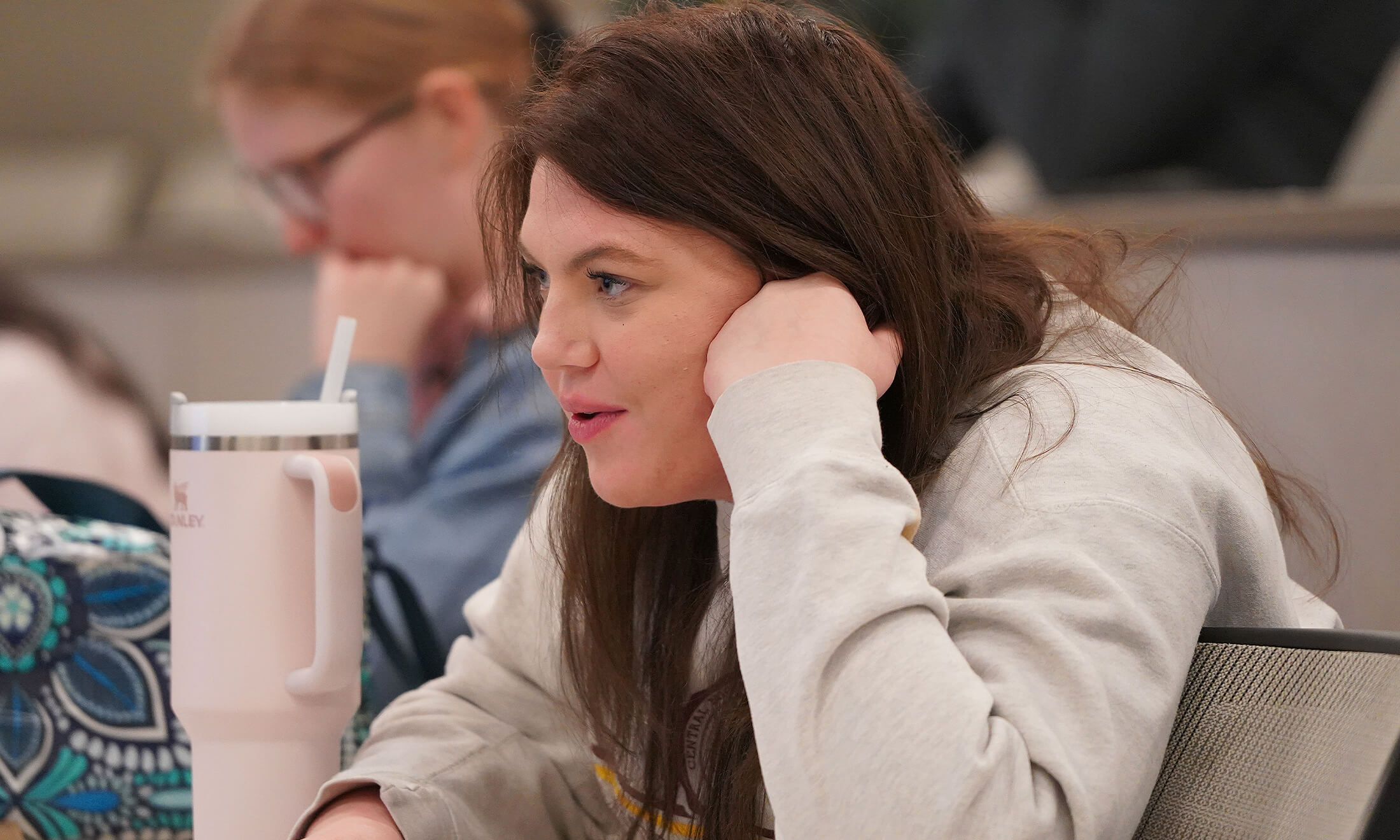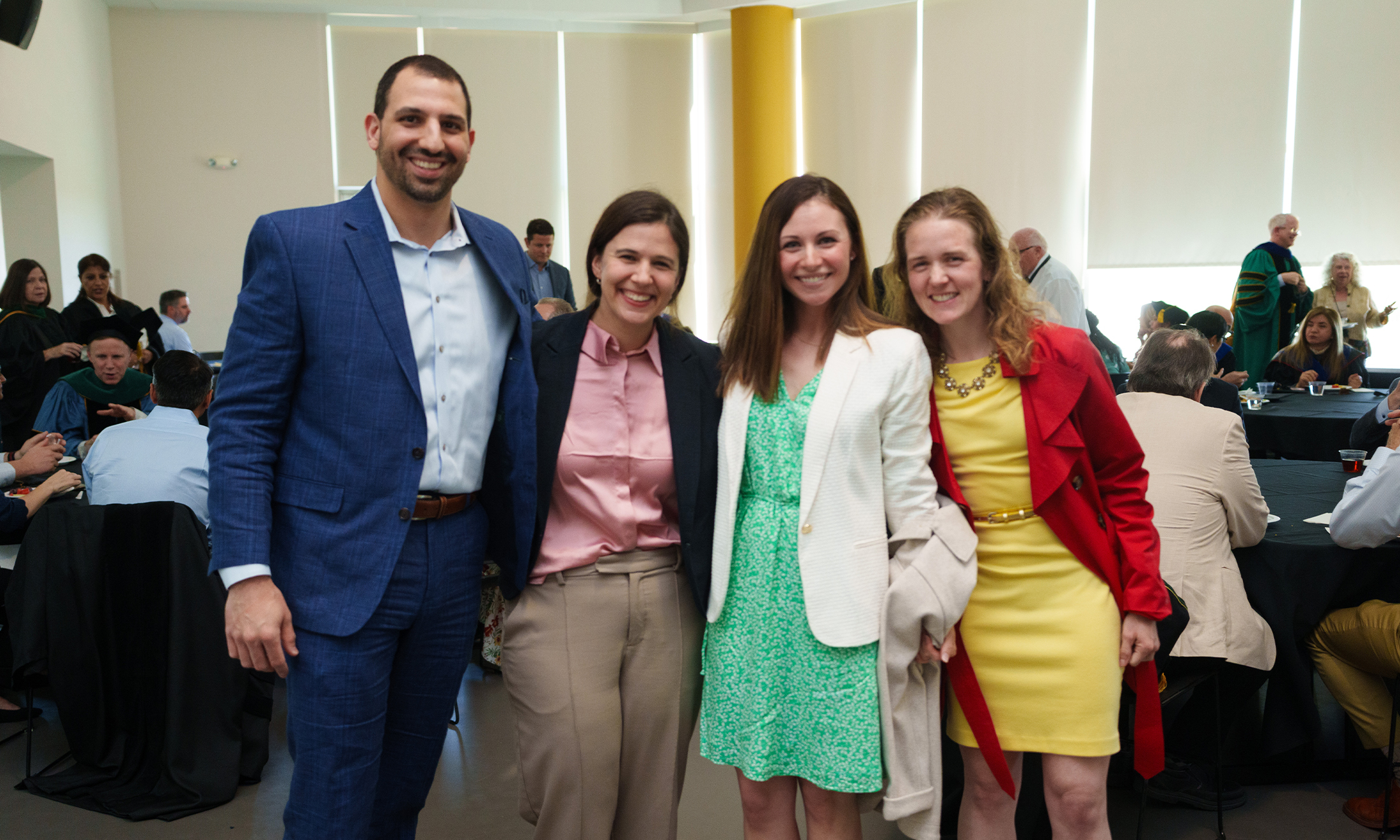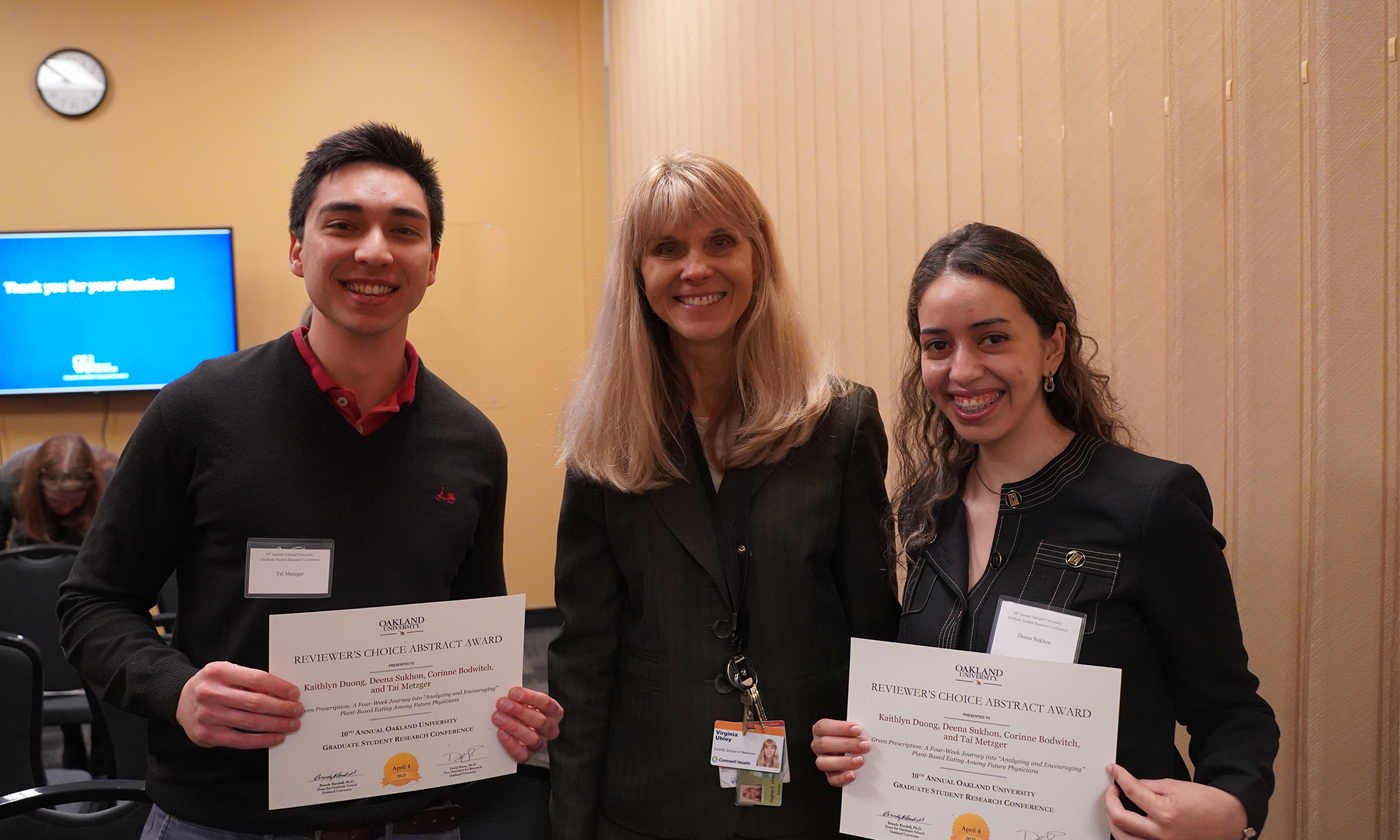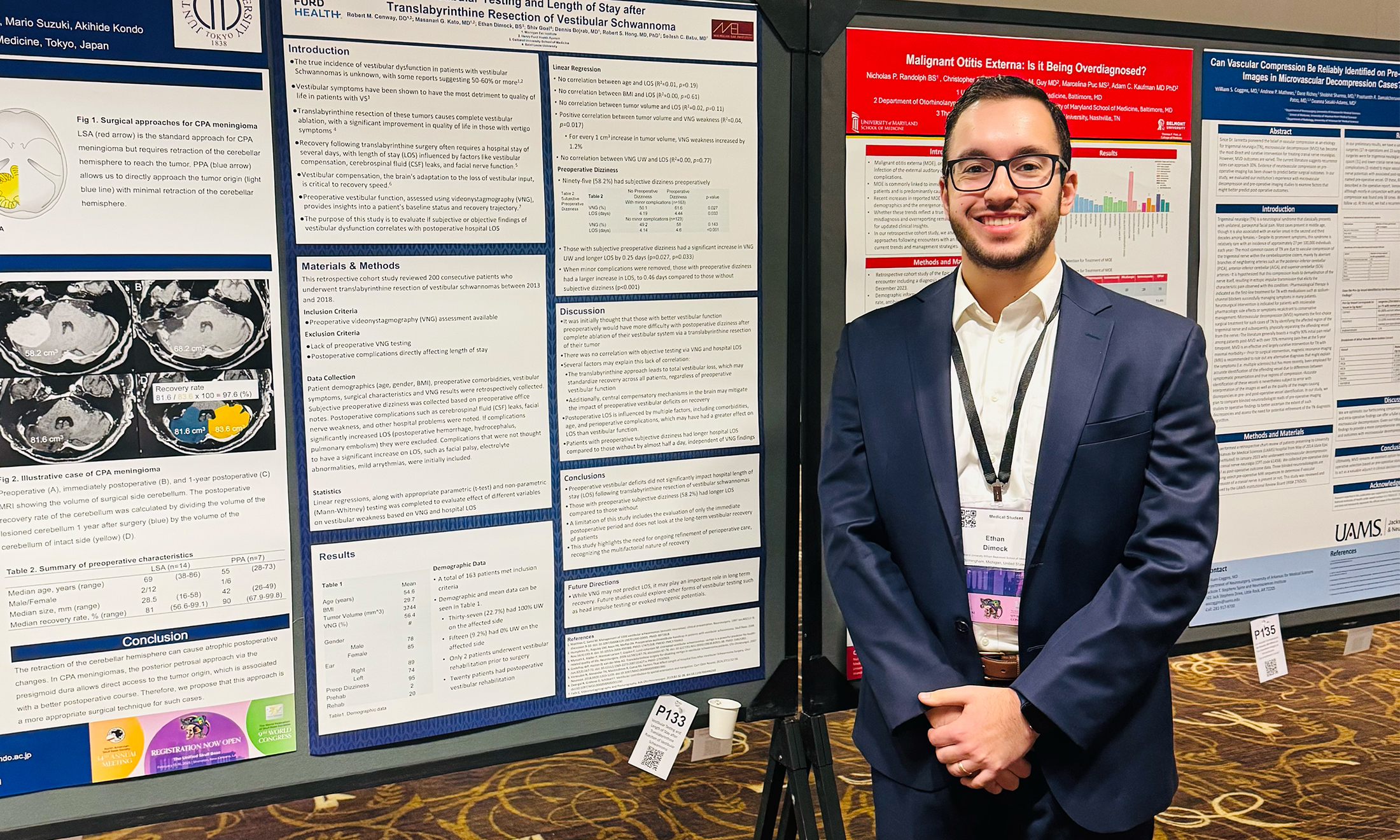‘Restraints do work’
Safety expert from NASCAR, GM Racing talks car crash injuries to OUWB med students
A longtime safety official with NASCAR recently visited the campus of Oakland University William Beaumont School of Medicine to talk about racing safety and injuries with medical students and faculty.
Tom Gideon, who now works as a mechanical engineer consultant with Birmingham-based Motorsports Safety Consulting LLC, gave the presentation in mid-January. Topics covered included a history of racing safety as well as basilar skull fracture, concussion, and traumatic impact.
Gideon’s extensive experience in racing safety includes 11 years total with NASCAR — more than seven years as senior director of safety for NASCAR R&D — and more than 11 years as safety manager for GM Racing.
Doug Gould, Ph.D., professor and chair, Department of Foundational Medical Studies, said it makes sense for Gideon to talk about brain injury with OUWB medical students.
“Much of the time, we discuss things in the classroom, laboratory and/or small group using clinical vignettes or cases, most of which are manufactured to meet the learning objectives of the session,” he said.
“Occasionally, a situation presents itself that involves actual people in the popular media that lends itself well to bringing to the classroom,” he added. “When I heard Mr. Gideon…speaking passionately and expertly about topics that are highly relevant to neuroscience and anatomy…it was a natural fit to ask him to speak.”
‘Restraints do work’
In addition to his experience with NASCAR and GM Racing, Gideon is also a member of the Society of Automotive Engineers and a board member for the International Council of Motorsports Sciences — an organization of professionals interested in the scientific, medical, and educational aspects of the human element of motor sport.
In short, he’s made it his life’s work to know as much as possible about automotive racing and safety.
Before talking specifics about brain injury, Gideon explained the evolution of racing safety.
“What we’ve learned over the last 110 years is that head and neck restraints do work,” he said.
He started with noting that in earliest days of racing — the 1900s — there were no restraints. It wasn’t until NASCAR was sanctioned as an operating body in1948 that a rule was put in place that mandated lap belts for race cars.
The rule was updated in 1968 to require four-point belts, and again in 1993, 2007, and 2015. Currently, requirements call for a minimum seven-point restraint.
Gideon also touched on the various advancements that have been made with regard to helmets, and head restraints. Specifically, Gideon noted the importance of the head and neck support (HANS) device, which is shaped like a “U” and folds down over the back of a driver’s neck and shoulders.
“The HANS people are big, big heroes as far as the drivers and fans are concerned, and as far as I’m concerned,” said Gideon. “It’s been the best improvement for safety in the last 15 years.”
Like many of the safety features of today’s racecar, he added, the purpose is to prevent the kind of sudden and extreme head movements that lead to injuries, such as basilar skull fracture.
‘Deep appreciation’
After his presentation, Gideon said he wasn’t trying to explain to medical students what certain injuries are, but wanted them to know how the injuries occur.
For example, he assumed the students knew about concussions and basilar skull fractures (when there’s a break of a bone in the base of the skull). He used video from testing labs to show how they occur during significant racecar crashes and how they are prevented through the use of safety equipment.
There’s a good chance, he said, at least some of the students will treat patients who experience similar trauma during crashes that involve regular passenger vehicles.
“The traffic death toll is going back up and everyone is trying to figure out why,” said Gideon. “One big reason is that people are speeding like crazy.”
Gould said he believes that the students who attended the session “now hold a deep appreciation for how trauma … can lead to skull fracture, how the blood vessels at the base of the brain may be impacted, patient outcomes and the latest technology used to prevent such injuries.”
“I believe the attendees will remember this session long into the future and hopefully be able to apply what they learned to their own patients in some capacity in the future,” he added.
Students like Simon Keep, M2, said he grew up watching motor sports and appreciated the opportunity to hear an expert like Gideon speak.
“You’re not going to meet many people with his level of experience and knowledge,” he said. “I may not remember all of the physics he talked about, but it was really a great opportunity to learn something new about an interesting topic.”
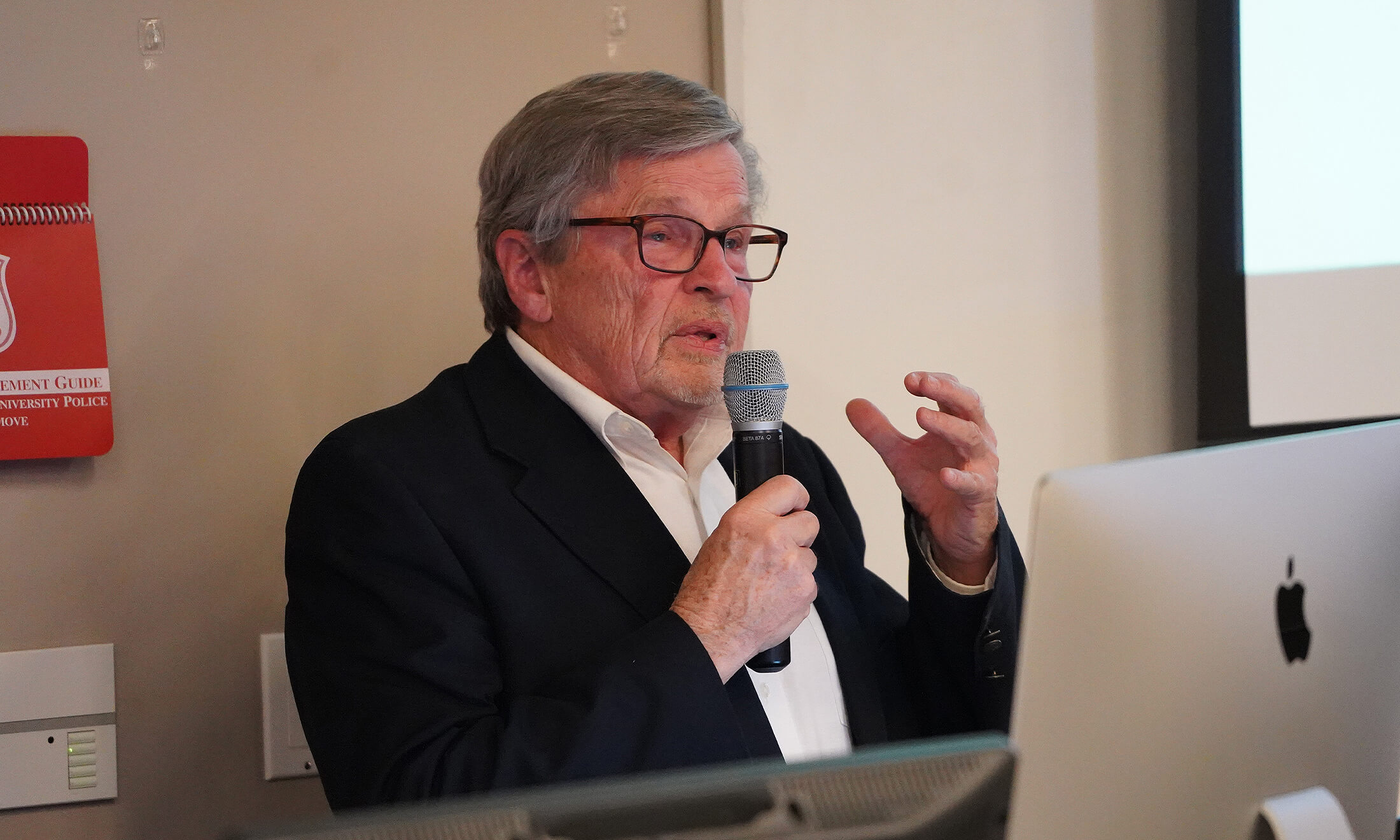
 April 27, 2023
April 27, 2023
 By Andrew Dietderich
By Andrew Dietderich